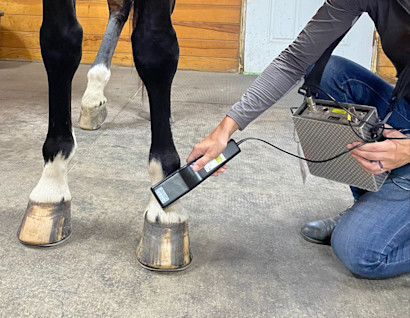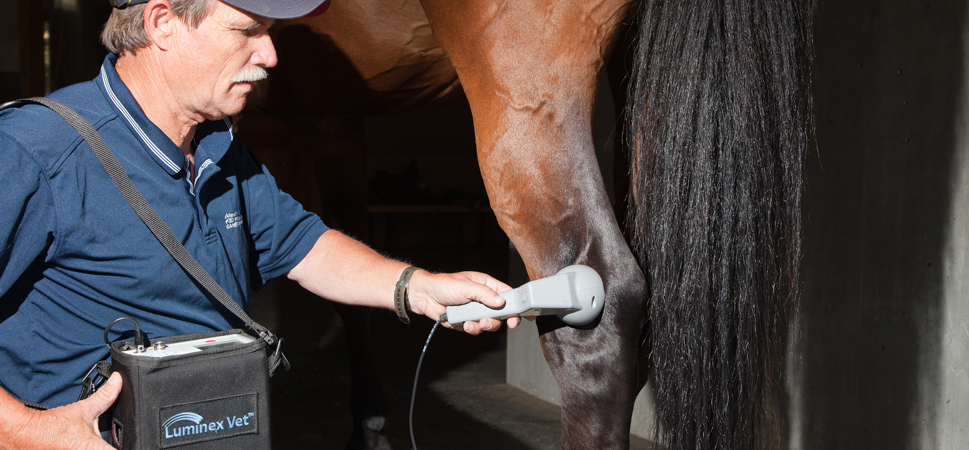Equine Therapy for Kid: Psychological and Behavior Support Clarified
Equine Therapy for Kid: Psychological and Behavior Support Clarified
Blog Article
Assessing the Performance of Laser Therapy in Horse Therapy for Injury Rehabilitation
The assessment of laser therapy's effectiveness in equine injury recovery depends upon multiple variables, including recovery time, discomfort reduction, and cells regrowth. Professional research studies recommend notable enhancements in conditions like tendonitis and osteoarthritis, associated to improved mobile feature and elevated ATP production. Veterinarians often observe exceptional results with laser therapy contrasted to traditional methods, positioning it as a crucial element in equine treatment. The requirement for continuous surveillance and customized therapy plans can not be overemphasized. What specific professional proof supports these insurance claims, and just how do veterinarians carry out these procedures in technique?

Understanding Laser Treatment
Laser treatment has actually come to be a crucial device in vet medication, especially in the treatment of equine conditions. Recognized for its non-invasive nature and efficiency, laser therapy entails the application of specific wavelengths of light to boost tissue repair work and lower swelling. This healing technique is progressively favored for its ability to accelerate the recovery process in horses experiencing a selection of bone and joint injuries and chronic problems.
The primary system behind laser therapy is its ability to boost cellular features. Additionally, laser treatment promotes vasodilation, enhancing blood flow and oxygen shipment to broken tissues, hence accelerating recovery.
In equine medication, laser therapy is especially advantageous for problems such as tendonitis, osteoarthritis, and wound recovery. The technique is lauded for its pain-relieving homes, permitting horses to regain flexibility and feature a lot more rapidly. Veterinarians also appreciate its minimal side effects contrasted to other therapy modalities, making it a trusted and risk-free alternative for equine care.
Exactly How Laser Treatment Functions
To understand exactly how laser therapy functions, it is important to dig right into the communication in between light energy and biological tissues. Laser therapy, likewise called Low-Level Laser Treatment (LLLT) or photobiomodulation, uses particular wavelengths of light to permeate cells and stimulate cellular processes. The system depends upon the absorption of photons by cell chromophores, mainly within the mitochondria, which are vital for energy production.
Upon absorption, these photons cause a collection of biochemical modifications, enhancing mitochondrial feature and leading to increased adenosine triphosphate (ATP) production. This surge in ATP increases cellular metabolism, advertising tissue repair work and regrowth. Furthermore, laser therapy regulates inflammatory reactions by impacting cytokine levels and minimizing oxidative anxiety, consequently alleviating discomfort and swelling.
One more significant facet of laser therapy is its function in boosting microcirculation. The treatment promotes vasodilation, improving blood circulation and oxygen delivery to broken cells. This facilitates the removal of mobile particles and supports the expansion of fibroblasts and collagen synthesis, vital for wound healing.
Medical Proof
The effectiveness of laser treatment in equine therapy has actually been validated with different clinical researches, showcasing its healing potential across a range of conditions. A research study carried out by Turner et al. (2012) showed that steeds treated with low-level laser treatment (LLLT) for ligament injuries showed increased recovery contrasted to those obtaining conventional treatments.
Likewise, research best site by Johnson and associates (2015) concentrated on equine muscular tissue injuries, exposing that laser therapy substantially sped up muscle mass fiber regeneration and minimized muscle mass rigidity. Medical assessments have actually shown that laser treatment can ease chronic problems such as osteoarthritis.
Vet Insights
Vet professionals have actually increasingly identified the value of laser treatment in equine treatment, pointing out both empirical evidence and direct experience. Dr. Jane Smith, a leading equine veterinarian, keeps in mind that laser therapy has actually revealed exceptional efficacy in minimizing inflammation and speeding up cells repair work. "In my technique, I've observed faster recuperation times in equines treated with laser therapy compared to typical techniques," she mentions. This sentiment is resembled by Dr. John Doe, that emphasizes that laser treatment supplies a non-invasive alternative with minimal side results, making it particularly fit for equine people.
Veterinarians additionally value the adaptability of laser treatment. It can be employed for a wide variety of problems, from surface injuries to much deeper musculoskeletal injuries. Dr. Emily Brown highlights its utility in treating conditions like tendonitis and osteoarthritis, where traditional therapies commonly fail. She points out that laser therapy can be tailored to the specific needs of each horse, guaranteeing ideal results.

Practical Factors To Consider
A crucial aspect of implementing laser treatment in equine treatment entails comprehending the useful factors to consider that ensure its efficiency and security. Firstly, it is crucial to choose the appropriate laser tool, as different kinds differ in wavelength, power, and infiltration depth. Veterinarians have to be well-versed in these criteria to tailor therapy protocols effectively to each injury kind
Furthermore, the regularity and duration of laser therapy sessions require careful planning to take full advantage of therapeutic benefits while decreasing any prospective unfavorable impacts. Consistent monitoring of the horse's action to treatment can guide needed changes in the treatment program. Establishing a risk-free and regulated setting check my site throughout therapies is also necessary to avoid unintended exposure to laser emissions, which might damage Get More Info both the steed and the handler.
Training and accreditation of workers administering laser therapy are vital to make sure correct strategy and to copyright safety requirements. Furthermore, preserving precise records of each session, consisting of laser setups and observed outcomes, is essential for examining the general effectiveness of the therapy and for making data-driven decisions.
Verdict
Laser treatment has actually arised as a reliable modality in equine injury rehabilitation, supplying considerable benefits in recuperation time, pain alleviation, and cells healing. For ideal results, continual tracking and individualized therapy protocols continue to be essential in leveraging the complete capacity of laser treatment in equine care.
Report this page